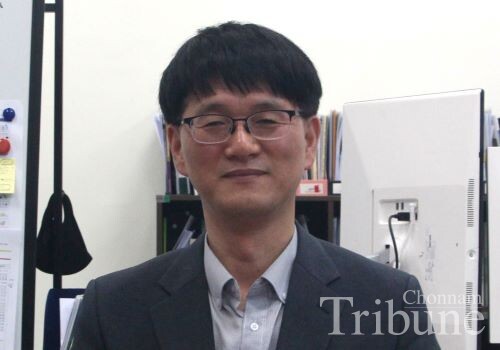인터뷰: 교육혁신본부장 차성현
Interview with Cha Sung-hyun, Head of Office of Education Innovation

What is CNU doing for student-centered education innovation?
The Office of Education Innovation focuses on planning and operating the educational activities of our university centered on students. Previously, the operation was using a top-down method centered on universities and professors, but now students are encouraged to participate in the decision-making process on educational innovation for themselves.
How can CNU students get involved with educational innovation?
There are two ways. Firstly, students can express their opinions by completing surveys on university courses and educational programs to reflect their ideas when planning a curriculum. Secondly, students can evaluate the programs that were created based on their opinions and give feedback on them. The main point of educational innovation, especially in general education, is to get the student to monitor the whole process of program development, operation, and evaluation, as well as freely sharing their opinions.
What is an example of student-centered educational innovation?
Recently, a liberal arts subject called "Understanding of Musical Theater" has been created through a demand survey conducted on students. We are currently designing five new liberal arts subjects, such as block chain, sign language, dating, and so on.
What are your plans for fostering creative convergence talents?
The core competencies of CNU are creativity, sensibility, and community. Creativity consists of convergence, problem-solving and computing. Through the reorganization of the curriculum for 2023-2026, now it is important to match the goal of a course with the core competencies of CNU, and it will also be reflected on the course evaluation. Also, for convergence education, two or more departments/majors can create a course together, as well as the Office of Educational Affairs and the Office of Education Innovation by designing new courses in the fields of their major and liberal arts.
What are examples of training creative convergence talents?
The establishment of the interdisciplinary convergence major is one of examples of convergence education to keep up with fast-changing technology and the demands of the industries. The establishment of convergence subjects such as "Curating Local Culture in the Digital Age" is in the same context. The Industry-Coupled Problem/Project-Based Learning (IC-PBL) is another good example. It is an educational model that provides practicum experience through industry-local community collaboration. The IC-PBL field training courses have been on a trial basis, but now liberal arts courses can be operated in the IC-PBL method.
By Song Su-min, Editor

